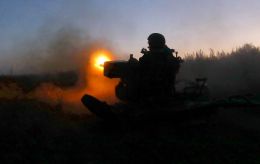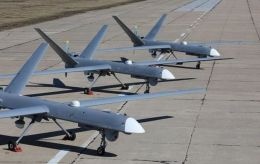Month into the Battle of Kursk: Don't expect Ukrainian advance on Moscow, defense to follow
 Photo: Ukraine is most likely preparing for a maneuverable defense in the Kursk region (Getty Images)
Photo: Ukraine is most likely preparing for a maneuverable defense in the Kursk region (Getty Images)
Based on the results of the Ukrainian Armed Forces' operation in the Kursk region over the past month, a partial buffer zone has been created. The forces have managed to draw enemy troops away from other fronts and prepare for future maneuverable defense.
Military expert and former spokesperson for the Ukrainian General Staff, Vladyslav Seleznov, spoke about this in a comment to RBC-Ukraine.
Monthly results of the Kursk operation
As the president stated, 60,000 Russian soldiers are now concentrated in the Kursk region. These are Russian forces that are no longer carrying out tasks in the areas they were originally assigned to by the Russian General Staff but are instead forced to block the expansion of the Ukrainian foothold. The enemy has had to adjust its plans.
Secondly, a buffer zone has been created. However, it’s too early to say that the residents of the Sumy region feel safer, as the enemy continues to use guided bombs and missiles to strike. But there are significantly fewer mortar shells, artillery rounds, and Russian sabotage groups in the border area.
With the redeployment of occupying forces, the intensity of battles on some fronts has decreased. The enemy did not transfer troops from the Donetsk region but focused on reallocating resources from secondary directions. As a result, areas in southern Ukraine, northern regions near Vovchansk and Lyptsi, near Chasiv Yar, and other fronts have seen reduced fighting.
Striking a vulnerable spot
The Ukrainian General Staff chose the most rational strategy by striking Russian territory at the exact moment and place where the Russian army was most vulnerable.
By early August, a North grouping had gathered in the Bryansk, Kursk, and Belgorod regions. The bulk - 55,000 soldiers - was concentrated in the Belgorod region to maintain pressure on northern Kharkiv. In the Bryansk and Kursk regions, there were up to 10,000 troops each, including territorial defense forces, conscripts, and FSB units.
We struck exactly where the enemy was most vulnerable. Thanks to the effective use of engineering equipment, we broke through the first and second defense lines almost instantly.
Of course, now the enemy is beginning to push us back little by little. But what have we accomplished in this month? In certain areas, we’ve established strongpoints to engage in prolonged defensive combat. Typically, attacking forces suffer a 3:1 loss ratio when trying to break through well-prepared defensive positions. So while the enemy attempts to push back the Ukrainian army, they will incur even greater losses.
Future developments
Regarding the expansion of the operation, I don’t have illusions about launching large-scale offensive measures - it requires vast resources. How many of our troops are in the Kursk region? Open sources mention 10,000-12,000. So, expecting a march on Moscow or a significant threat to Kursk is unrealistic.
The Russians are already trying to push us out of our positions. Occasionally, they have some successes - not major, only at the tactical level - but still.
We must understand that the Ukrainian army did not enter the Kursk region to maintain permanent control over it. Next, there will be a maneuverable defense, where the enemy will suffer even greater losses when forced to attack the well-prepared defensive lines of the Ukrainian Armed Forces. Essentially, the Kursk offensive is part of the strategic defensive operation of the Ukrainian Armed Forces in 2024.
Translated by Kateryna Danishevska

